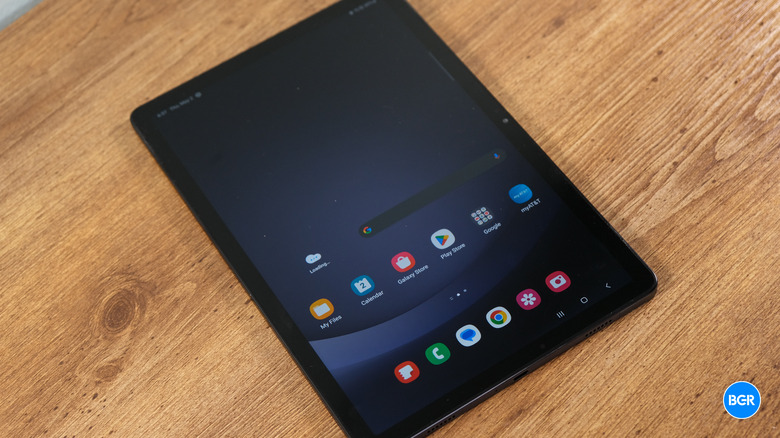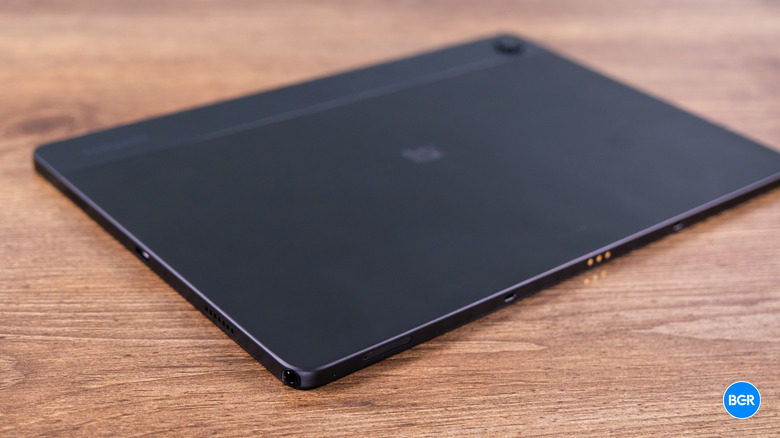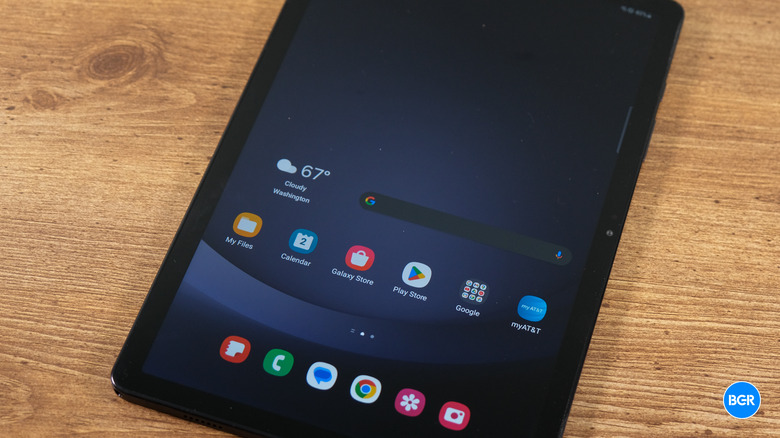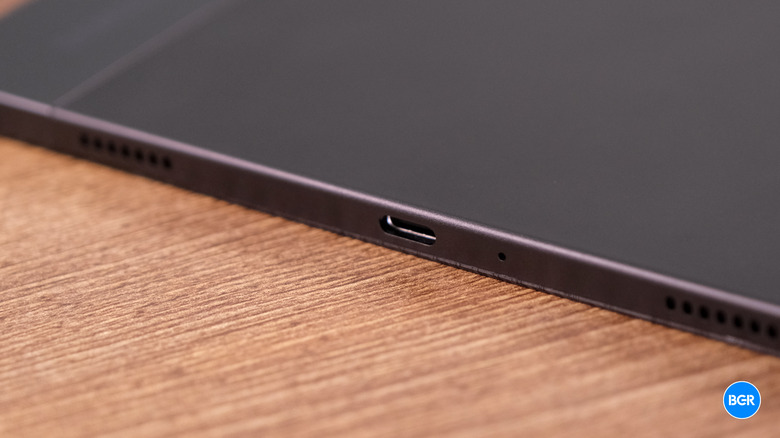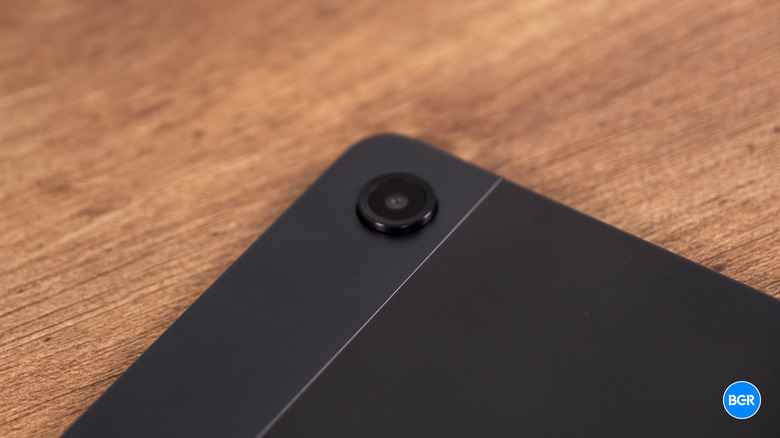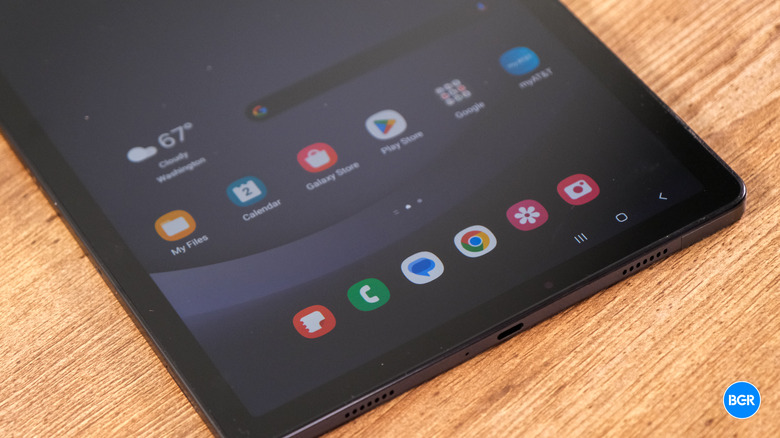Samsung Galaxy Tab A9+ Review: Cutting The Right Corners
- Sleek design
- Good battery life
- Decent performance
- Low price
- 90Hz refresh rate
- Display quality be better
- Camera isn't great
| Buy From | List Price | Sale Price | |
|---|---|---|---|
| Amazon | $219.99 | $219.99 | See It |
We may receive a commission on purchases made from links.
Finding a great tablet that's not an iPad can be tricky. When it comes to Android tablets, most consider Samsung's Galaxy Tab line to be the best. But the top-end Galaxy tablets, like the Galaxy Tab S9, aren't cheap — and for most people, who simply want something to watch movies in bed and play occasional games, it can be hard to justify spending that kind of cash. But that's where the Samsung Galaxy Tab A9+ comes in.
The Galaxy Tab A9+ is cheaper than the cheapest iPad (coming in at only $220), yet it still services as a well-designed option with enough performance to handle the vast majority of day-to-day tasks. Obviously, it cuts corners to hit that price compared to the Galaxy Tab S9, for example. But how many corners does it cut? I've been using the Samsung Galaxy Tab A9+ for a while now to find out.
Samsung Galaxy Tab A9+ specs
| Dimensions | 0.12 x 6.64 x 0.27 inches |
| IP rating | None |
| Display resolution | 1200 x 1920 pixels |
| Display size | 11 inches |
| Display type | LCD |
| Display refresh rate | 90Hz |
| Chipset | Qualcomm Snapdragon 695 5G |
| Memory | 4GB, 8GB |
| Storage | 64GB, 128GB |
| Rear camera | 8MP |
| Video | 1080p at 30fps |
| Front camera | 5MP |
| Ports | USB-C 2.0 |
| Battery size | 7,040mAh |
| Charging | 15W wired |
| Connectivity | Bluetooth 5.1, Wi-Fi 5, 5G |
| Colors | Graphite, Silver, Navy |
| Price | $220 |
Samsung Galaxy Tab A9+ design
The Samsung Galaxy Tab A9+ may be relatively inexpensive, but it certainly doesn't look cheap. In fact, the overall design of the tablet is actually quite premium. It features a slim build that makes it easy to hold, and feels great.
The Galaxy Tab A9+ has a two-panel metal build on the back, and the build felt relatively strong overall. That metal curves around to the edges of the device too, following the overall design language of some of Samsung's more expensive devices.
Much of the build of the device is to be expected. There's a single camera protruding from the back of the tablet, along with a USB-C port on the bottom. On the left edge (when holding the tablet vertically) can be found the power button and volume rocker.
One design difference between this tablet and more expensive alternatives is this slightly larger bezels. They're not huge, and frankly, I kind of like the size, considering the fact that it allows for enough room to hold the tablet without accidentally touching the display. However, you might find that the larger bezels contribute to a slightly cheaper looking design, compared to the Galaxy Tab S9, for example.
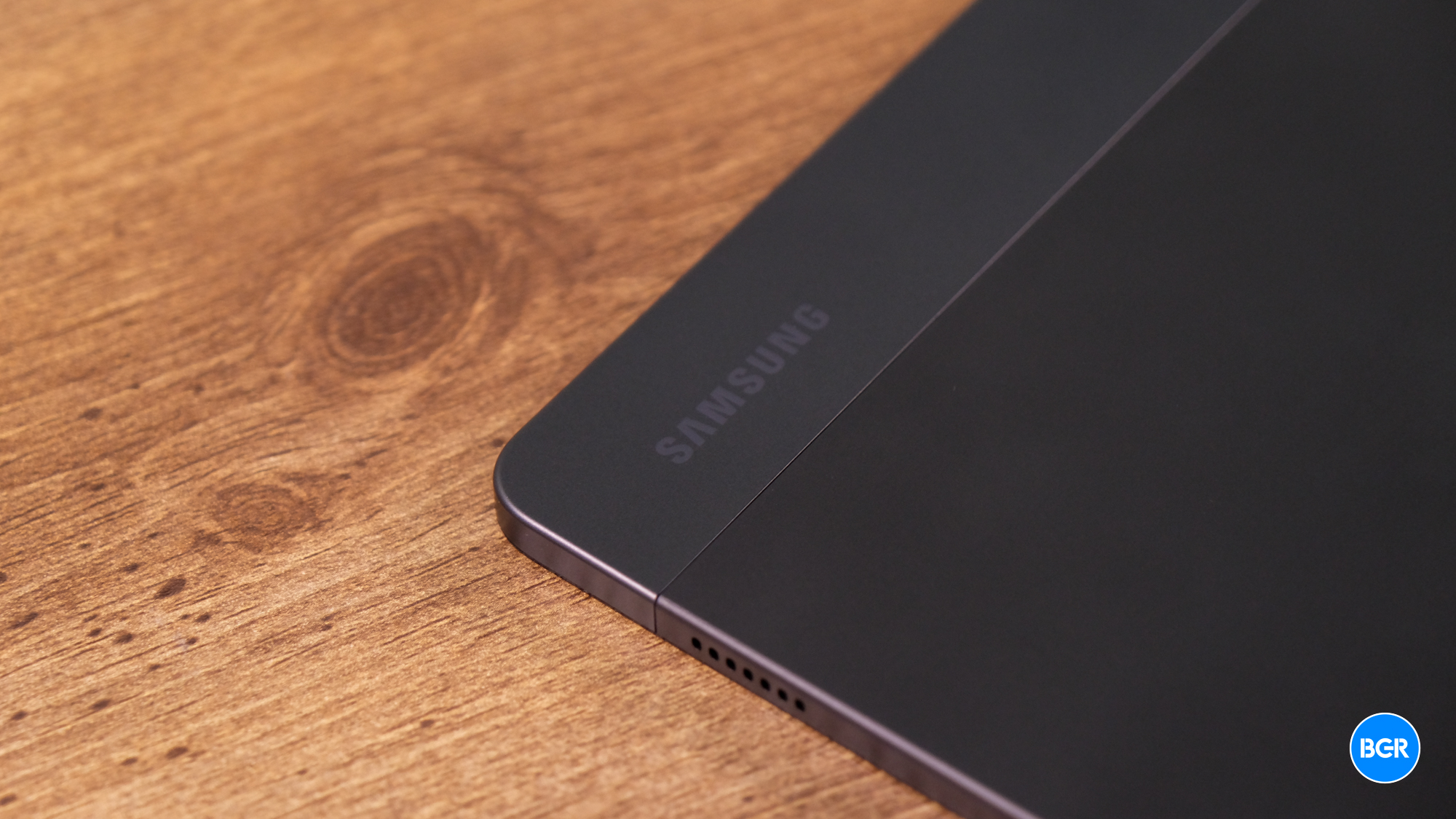
The tablet measures in at 10.12 x 6.64 x 0.27 inches, meaning that it's on the slightly more portable side of tablets. I find it to be a pretty good size, however, those looking for something for productivity and multitasking might want something with a slightly larger display.
Generally, I really like the design of the Galaxy Tab A9+. If you look closely, you could see that the tablet does have a cheaper build then Samsung is more expensive options, but it still doesn't feel overly cheap by any means.
Samsung Galaxy Tab A9+ display
On the front of the tablet can be found an 11-inch LCD display, with a 1200 x 1920 resolution and up to a 90Hz refresh rate. Don't assume this is a high-tech display — it's not. But it's also perfectly fine for most use cases.
The type of display (LCD, versus an OLED display for example) means that the tablet won't be able to deliver the deep black levels that you might get from other devices. The fact that the resolution is somewhat low also plays into the experience of things like watching movies — especially considering the proliferation of 4K content these days.
The refresh rate on the device is high enough for most use cases. It's easily high enough for watching video, and it helps make animations look smoother than they would on a 60Hz display. In this price range, it's hard to make a point against Samsung for not including a 120Hz display, for example. I would have preferred a 60Hz AMOLED display over a 90Hz LCD display.
The brightness is fine, too, but again, it could be higher. It's bright enough for indoor use, but in direct sunlight, some might find that it isn't quite bright enough. Unless you're looking for a device to regularly take to the park or the beach, this won't be a big deal for most.
Samsung Galaxy Tab A9+ performance
The Galaxy Tab A9+ is powered by a mid-range Qualcomm chip, the Snapdragon 695 5G. That chip is coupled with either 4GB or 8GB of RAM, which is on the lower end, but still enough for most basic tasks that 95% of people use their tablet for.
Generally, I found that the tablet performed perfectly fine. Was it the fastest-loading device? No, of course not. I stuttered while loading many apps, and probably isn't the best choice for those who really want something to play more demanding games on. However, it certainly handled web apps, productivity tools like Google Docs, and entertainment apps like Netflix, without issue.
In case you care about benchmarks, here are the benchmark results we achieved with the tablet:
- GeekBench 6: 913 single-core, 2073 multi-core
- 3DMark Wild Life Extreme: 361
These results aren't all that great, but that's to be expected. Again, though, the tablet will perform fine for basic tasks, like entertainment — even if the app stutters for half of a second when you launch it.
Samsung Galaxy Tab A9+ battery and charging
The tablet comes with a 7,040mAh battery, and considering the lower-tech display, I found that the battery was easily able to power the device for extended periods of time. Most users will easily be able to get a days or more out of the tablet, with a few hours or so per day. Heavier users may find that they need to charge the tablet more often, though.
Speaking of charging, it's pretty slow. Unfortunately, the tablet only charges at up to 15W, meaning it'll take over an hour for a full charge. Samsung doesn't include a charger in the box, so you'll have to bring your own.
Samsung Galaxy Tab A9+ camera
The camera quality is an easy way for a company to cut costs when it comes to a tablet — considering the fact that most people don't use tablets for photography, instead using them for video calls. Indeed, that's exactly what Samsung did. The camera on the Galaxy Tab A9+ isn't great.
On the back of the tablet can be found a single 8 megapixel camera, and even in well-lit environments, images it produced were a little bland. Colors weren't all that bright, and the camera struggled in challenging scenarios, like when subjects were heavily backlit.
The front-facing camera wasn't better. It's a 5-megapixel camera, and again, images captured with it weren't great. That said, you probably wouldn't use the front-facing camera on this device to snap selfies. Instead, you'll use it for video calls, and for that, it performs perfectly fine.
Samsung Galaxy Tab A9+ software
The Galaxy A9+ supports Android 14, with Samsung's OneUI 6.0 over the top of it. If you've used other Samsung phones or tablets in the past, you'll recognize the layout and feel of it. Samsung says that the tablet will get updates until 2027, which isn't bad — though it won't quite compare with the updates that you'd get from an iPad, for example.
Setting aside the overall experience of using OneUI (which I find fine, but I prefer the stripped-back feel of a Pixel device), Android on tablets still isn't the best. This has little to do with Samsung's software though, and more to do with the fact that plenty of apps still aren't developed for the big-screen Android tablet experience.
On the Galaxy Tab A9+, Samsung does support some helpful multitasking tools. You can use up to three apps at once in split-screen, but then on top of that you can also add windowed apps. You can also enable DeX mode on the tablet, which I did briefly while testing, but largely avoided considering the fact that I didn't have a keyboard accessory on hand.
Conclusions
The Samsung Galaxy Tab A9+ is far from a perfect tablet — but it's not priced like a perfect product. Frankly, I think the corners that Samsung cut to hit the low price point were very reasonable. I definitely would have preferred a slightly better display, but I didn't mind the fact that the camera wasn't great, or the fact that the device didn't necessarily perform amazingly. The good battery and the low price make the tablet an excellent choice for those who want something basic for media consumption.
The competition
The budget tablet world is a little underserved, and frankly, in this price range, it's worth going for the Galaxy Tab A9+ or finding a used year-old tablet, which offers better-optimized app support and will likely support more operating system updates.
Should I buy the Samsung Galaxy Tab A9+?
Yes, if your budget is around $200 or so.
